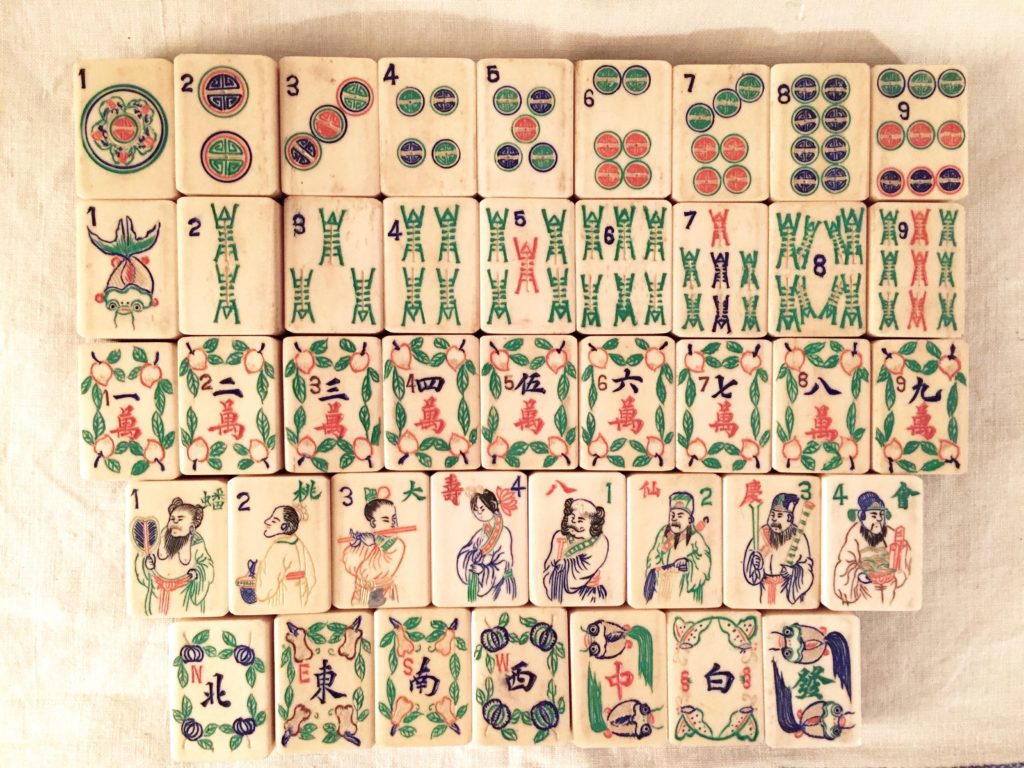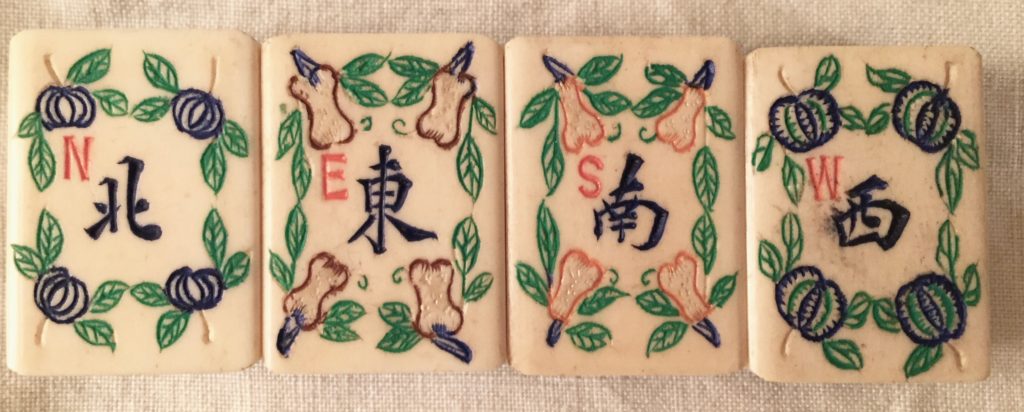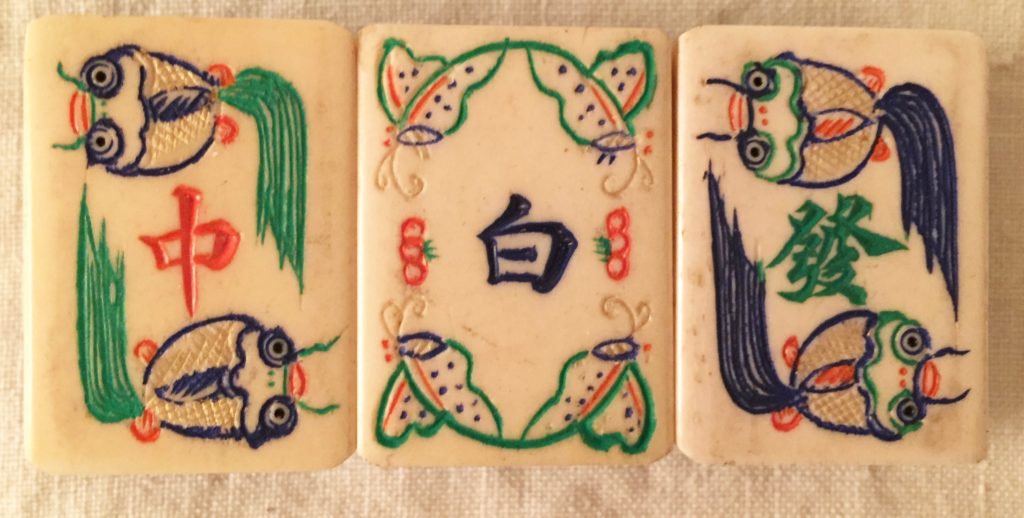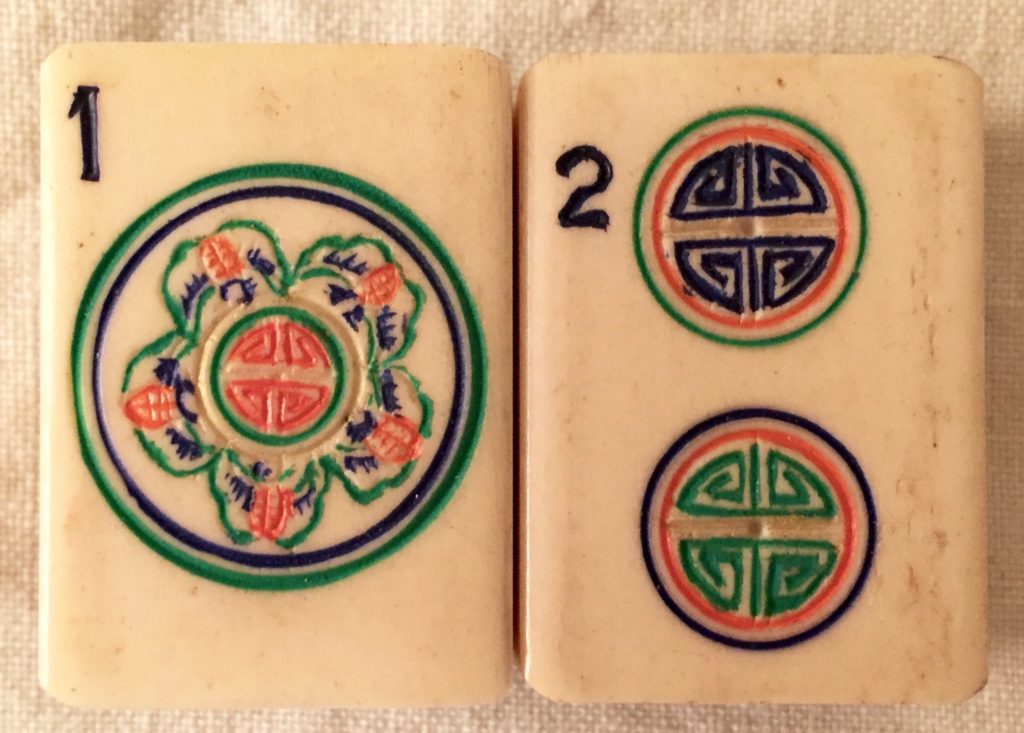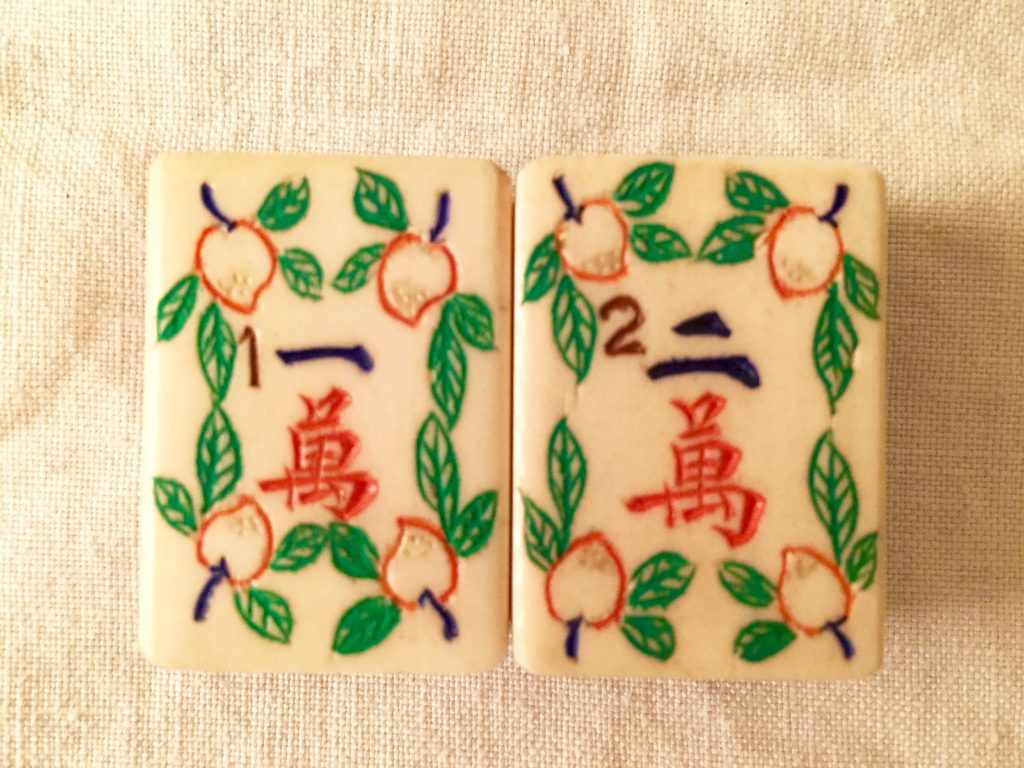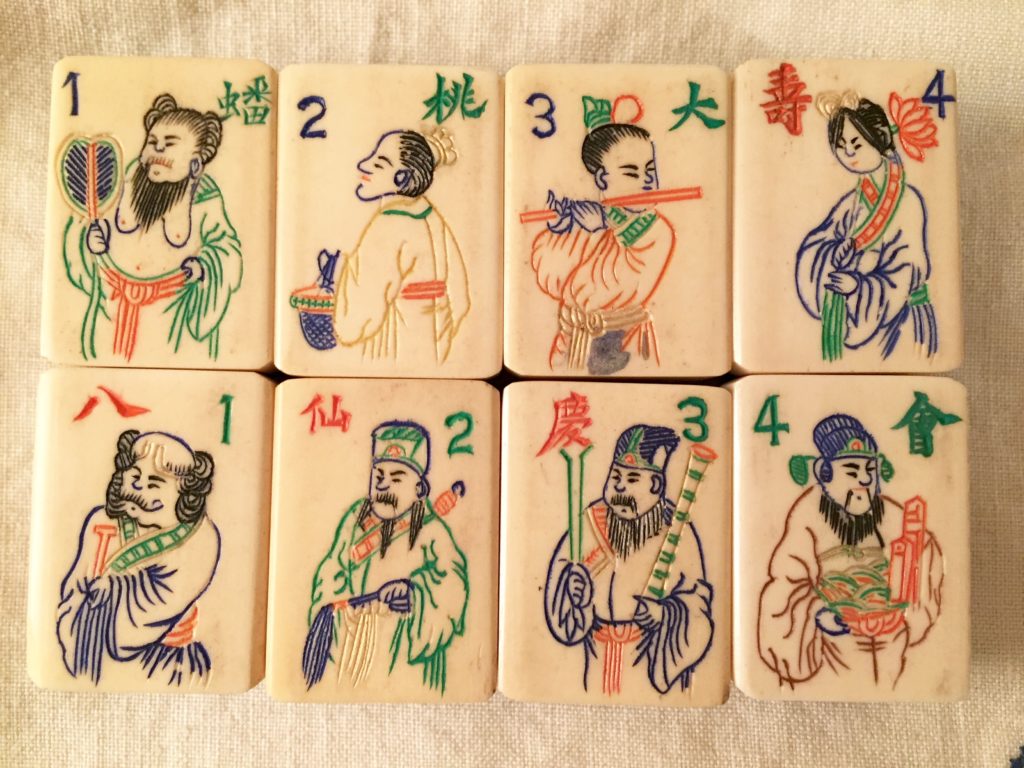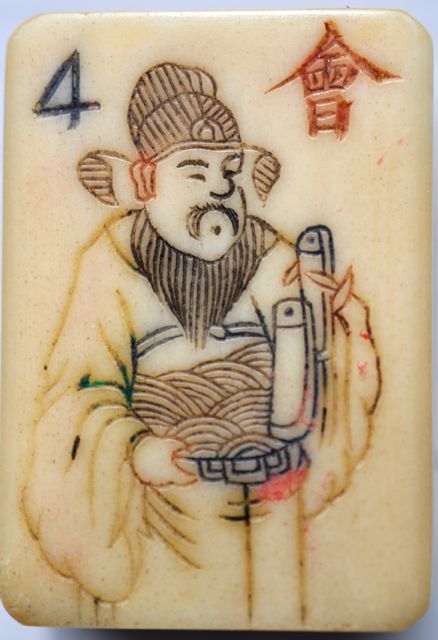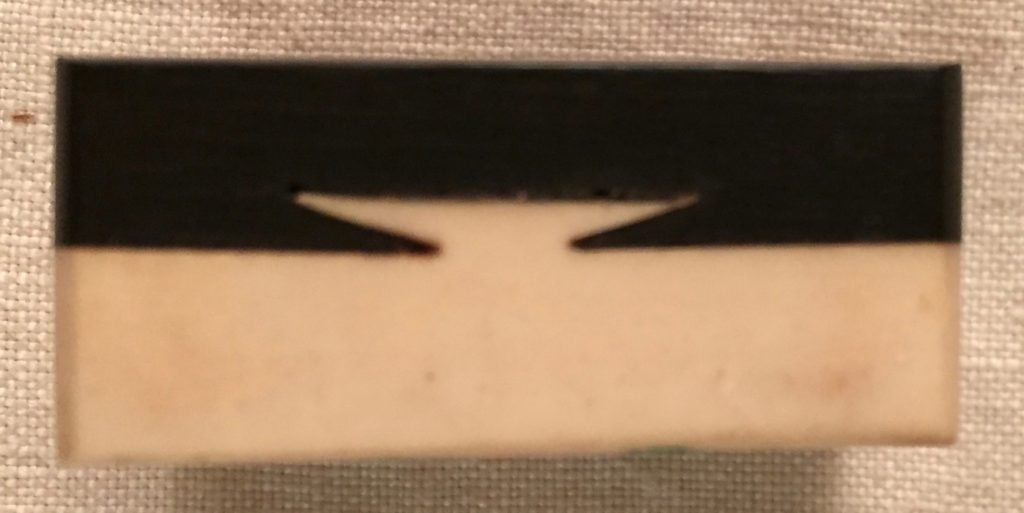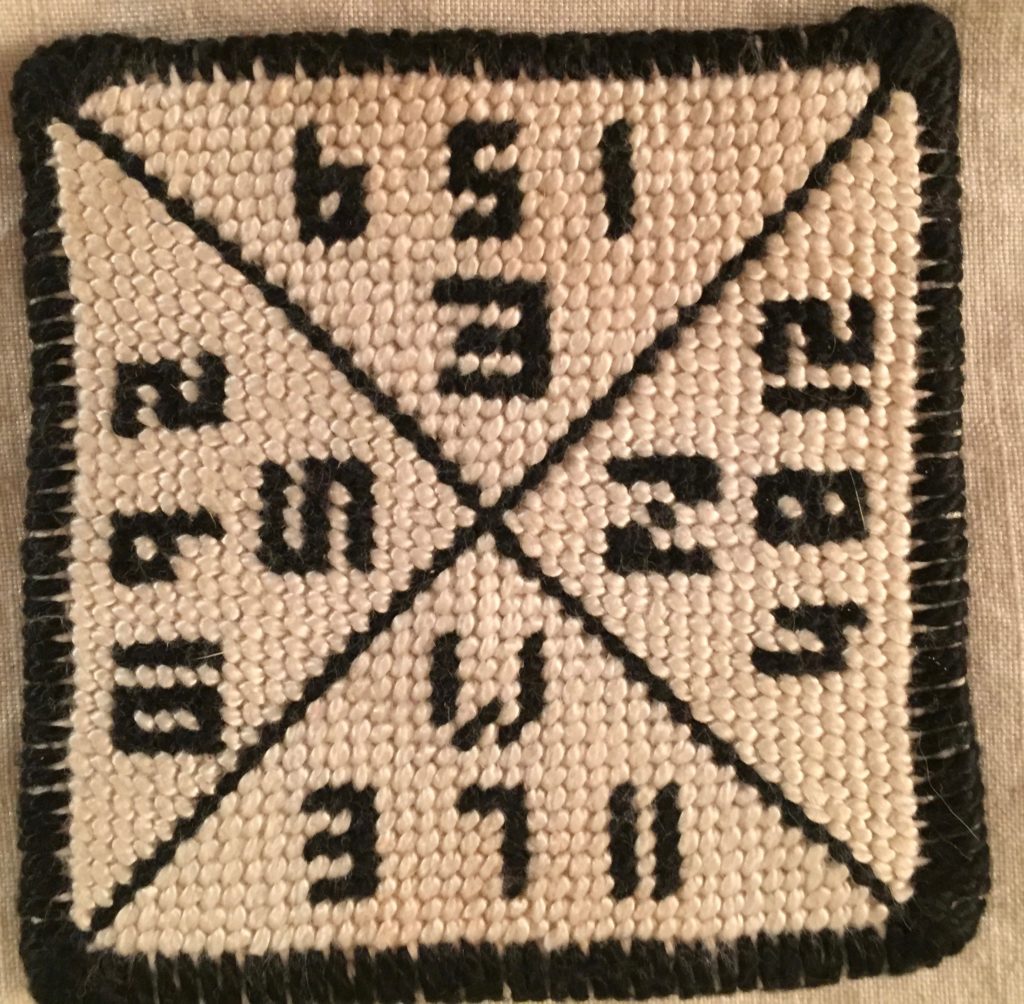Here is a set to love.
A reader contacted me with photos of this incredible set. I must confess I almost fell out of my chair when I first saw the images. Not only is this an elaborately carved set, it has ebony backs! I had only seen photos of one other such set, in the Mahjong Collector Magazine. I wanted to write this one up for Valentine's Day.
A bit of background. The reader was not looking for a set, but happened upon it while trying to find a piece of furniture. Needless to say, the idea of the cabinet went away, and this set, of course without the practicality of the cabinet, took its place! I certainly can understand that-who needs a cabinet when you can have a treasure!
So let's look closely at the tiles:
The Winds are charming with squash at the edges. (Squash, with all their seeds, are symbols of the wish for many children.)
The Dragons have the goldfish (symbol of wealth and prosperity) on the Green and Red Dragons. Don't you love those long fishtails? The White Dragons have what I believe to be butterflies.
Longevity symbols made it to the Dots. Five bats are surrounding the longevity symbol on the One Dot (bats symbolize longevity and good fortune; here they can be identified by the orange backs) and the longevity symbol is in the middle of all the other Dots.
The goldfish is the One Bam, and longevity symbols are the other Bams.
Even the Craks are beautiful, with peaches (symbols of longevity) in the corners.
The Eight Immortals make up the Flower tiles. I wonder if this set was made in the same workshop as an orphan tile I have, seen below. When I saw that tile I realized the art on these sets can be terrific, inspiring Mah Jongg The Art of the Game. I think it is possible some of the high-end workshops might have worked in bone and bamboo as well as bone and ebony. Or if they didn't, maybe it was the same designer who did both sets.
Ebony sets do not look any different from other sets, except from the side. Here is that smashing side-view:
You will notice that ebony is much flatter than bamboo, making the building of walls two tiles high much easier.
The box is a treasure as well:
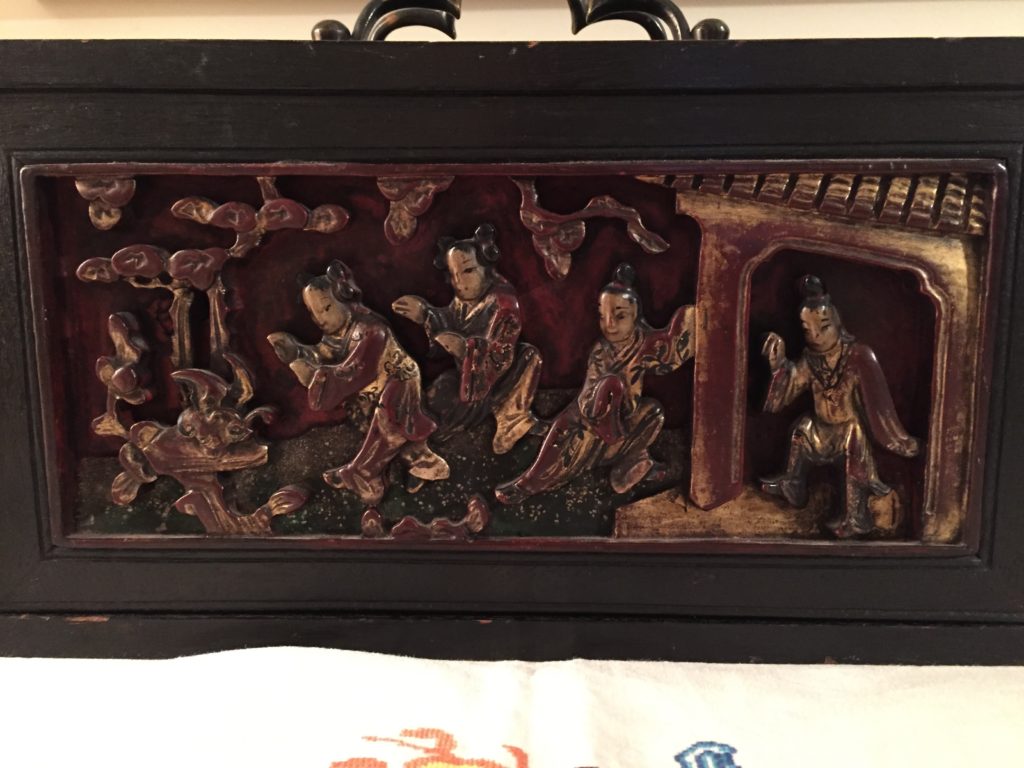
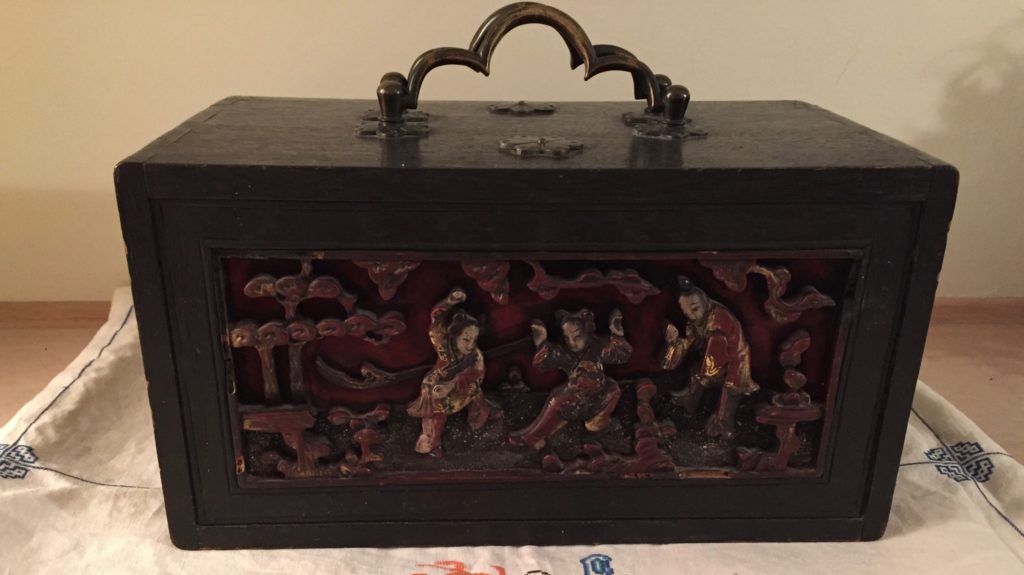
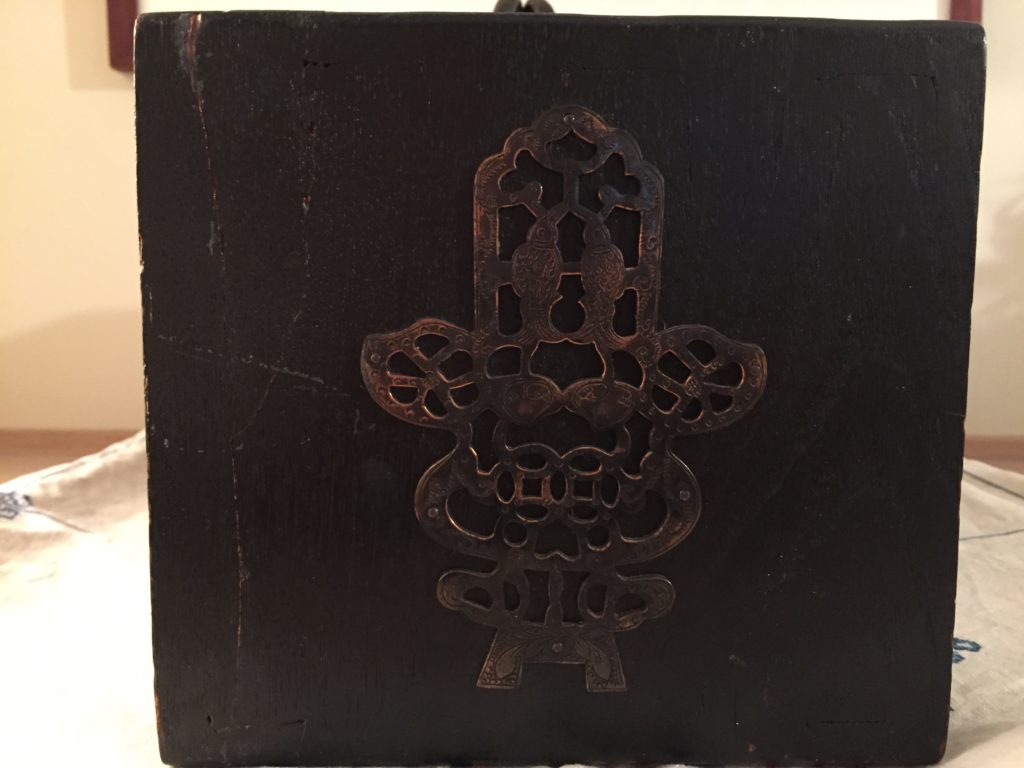
The sides of the box have brass details.
This set was really loved. The owner (or someone close to the owner) needle-pointed a square that is used in some versions of mahjong. The piece indicates to players which wall will be used first when starting play. I can certainly understand why this set would have been loved, can't you??
You can see the four orientation points, (West is on the bottom here) and the numbers show which wall be be the first to be used in the deal, based on the rolls of the two dice. If the player rolled a 3, 7 or 11, the wall in front of West would be the first, and play would go in a clockwise direction from there.
Happy Valentine's Day.

